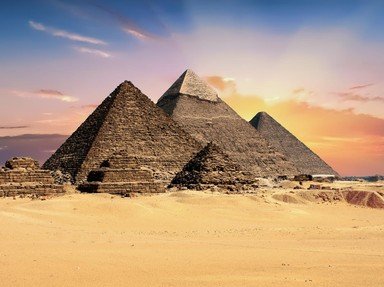
The Pyramids on the Giza Plateau Quiz
Did you know that there are an estimated forty pyramids in Egypt? Built during the Old and Middle Kingdoms, they are a testament to the skill of the ancient people. See if you can sort information about the three largest pyramids on the Giza Plateau.
A classification quiz
by ponycargirl.
Estimated time: 3 mins.
- Home
- »
- Quizzes
- »
- History Trivia
- »
- Ancient Egypt
- »
- Pyramids